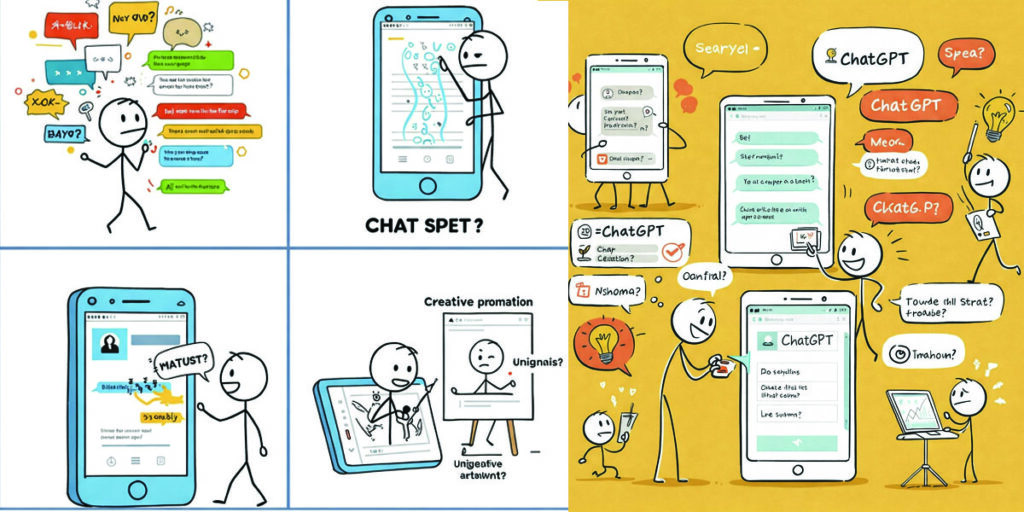AI video creation tool with talking avatars and multilingual support.
The landscape of digital content creation has been dramatically reshaped by the advent of Artificial Intelligence. Among the pioneering companies in this transformative field is Movio, an entity that has evolved significantly and is now recognized as HeyGen. This article explores the history of this innovative platform, its position within the economic market, and the crucial role of networking in its growth and reach.
The journey of Movio, which began with a different focus, to becoming a leading AI video creation tool with talking avatars and multilingual support, mirrors the rapid advancements and shifting applications of AI technology. Understanding this evolution provides valuable insight into the dynamics of the generative AI market and the increasing demand for accessible and efficient video production solutions.
From Film Analytics to AI Avatars: The History of Movio (HeyGen)
The company initially known as Movio was founded in 2010 in Auckland, New Zealand, by William Palmer. In its nascent stages, Movio was not focused on AI-powered video generation as we know it today. Instead, its core business revolved around data analytics and marketing campaigns specifically tailored for the film industry. This early iteration of Movio leveraged data to understand audience behavior, optimize marketing strategies for movie releases, and provide insights to film distributors and exhibitors.
While the exact timeline and reasons for the pivot to AI video creation are not extensively documented in publicly available information regarding the original Movio, the strategic shift reflects the broader trend of technology companies adapting to emerging opportunities in the AI space. The transition from a data analytics firm for a specific industry to a generative AI content creation platform signifies a significant technological reorientation and a pursuit of a wider market.
The crucial turning point in the history of this entity is its transformation into HeyGen. This rebranding and refocus marked the company’s commitment to leveraging cutting-Gedge AI, specifically in the domain of generative video. HeyGen emerged with a clear value proposition: enabling users to create professional-looking videos featuring talking avatars with multilingual capabilities, significantly reducing the time, cost, and complexity traditionally associated with video production.
This evolution was likely driven by several factors. The rapid advancements in AI, particularly in natural language processing, computer vision, and generative adversarial networks (GANs), made the concept of realistic talking avatars a technological reality. Simultaneously, the booming demand for video content across various platforms – social media, marketing, e-learning, corporate communication – created a fertile ground for tools that could streamline video creation. The original Movio’s experience in the entertainment and marketing sectors likely provided valuable insights into the need for efficient and engaging content creation tools.
While the specific milestones in HeyGen’s development phase (post-rebranding) are not always explicitly labeled as “Movio history,” the progress in features like the variety and realism of avatars, the expansion of language support, the ease of script-to-video conversion, and the introduction of functionalities like voice cloning and lip-syncing are key developmental markers of the platform in its currentとして (HeyGen) form. The ability to generate videos in 1080p resolution, customize avatar appearance, and offer a user-friendly interface are all part of the technological advancements that define the history of this AI video creation tool.
Navigating the Economic Landscape: Market Position, Business Model, and Competition
HeyGen operates within the dynamic and rapidly expanding market for generative AI tools, specifically targeting the AI video creation segment. This market is characterized by innovation, increasing demand, and a growing number of players.
Business Model and Pricing:
HeyGen primarily employs a Software-as-a-Service (SaaS) business model. This is evident in its tiered subscription plans, which typically include:
- Free Plan: A basic offering with limited credits, watermarked content, and restrictions on video duration and resolution. This serves as an entry point for users to experience the platform’s core functionality.
- Paid Tiers (Creator, Business, Enterprise): These plans offer increasing numbers of credits, removal of watermarks, longer video durations, higher resolution options (though 4K might still be an enterprise-level feature), and potentially access to more advanced features like custom avatars, premium voices, and team collaboration tools. The pricing structure is designed to cater to individual content creators, small to medium-sized businesses, and large enterprises with varying video production needs. The “credit” system is a common model in generative AI, where users consume credits based on the length or complexity of the video generated.
This subscription model provides HeyGen with a predictable revenue stream and allows for continuous development and improvement of the platform.
Target Market:
HeyGen’s target market is broad and diverse, reflecting the widespread need for video content. Key customer segments include:
- Content Creators: YouTubers, social media influencers, and bloggers who need to produce engaging video content regularly without the overhead of traditional video production.
- Marketers: Individuals and teams creating promotional videos, social media ads, explainer videos, and product demonstrations. AI avatars offer a quick and cost-effective way to generate diverse marketing materials.
- Educators and Trainers: Developers of online courses, training materials, and educational content can use HeyGen to create engaging video lectures and tutorials featuring avatars.
- Businesses: Companies across various industries can utilize HeyGen for internal communications, customer support videos, onboarding materials, and sales presentations.
- Freelancers: Video editors and content creators offering services to clients can leverage HeyGen to increase their efficiency and offer competitive pricing.
The platform’s multilingual support significantly expands its addressable market globally, allowing users to create content tailored to different language demographics.
Market Share and Growth:
Quantifying HeyGen’s exact market share is challenging without specific industry reports. However, it is a prominent player in the AI avatar video generation space and has gained significant traction. The overall market for generative AI in media and marketing is experiencing substantial growth. Reports indicate that the generative AI in movies market alone is projected to reach billions of dollars in the coming years, with content generation being a dominant segment. While HeyGen’s focus is broader than just movies, these figures highlight the immense potential and investment flowing into AI-powered content creation. The AI for Sales & Marketing market is also projected for significant growth, further indicating a favorable economic environment for tools like HeyGen.
HeyGen’s growth is likely fueled by the increasing demand for video, the need for cost and time efficiency in production, and the continuous improvement in the quality and realism of AI-generated videos and avatars.
Competitive Landscape:
The AI video creation market is competitive, with several companies offering similar or overlapping functionalities. Some of HeyGen’s key competitors in the AI avatar video space include:
- Synthesia: Another well-known platform for creating videos with AI avatars, often seen as a direct competitor.
- Colossyan: Offers AI video creation with a focus on corporate training and communication.
- Deepbrain AI: Provides AI-powered video synthesis with realistic avatars.
- HourOne: Specializes in creating AI presenters for various content types.
- Elai.io: Focuses on turning text and blogs into videos with avatars.
Beyond AI avatar platforms, HeyGen also competes indirectly with traditional video editing software (like Adobe After Effects, Premiere Pro, Final Cut Pro) and other types of AI video generators that might focus on different approaches, such as generating videos from text prompts without necessarily using photorealistic avatars (like Runway, Pika Labs, OpenAI’s Sora, though the latter is not yet widely available).
HeyGen differentiates itself through factors like the quality and variety of its avatars, the naturalness of its multilingual voice synthesis and lip-syncing, the ease of its user interface, and the specific features it offers (e.g., instant avatar creation, video translation). The pace of innovation in this competitive landscape is high, with companies constantly adding new features and improving the realism and capabilities of their AI models.
Funding and Investment:
While the initial Movio entity was noted as unfunded in some older records, HeyGen, in its current form, has attracted investment, which is typical for rapidly growing tech companies in a hot market like generative AI. Although specific details of HeyGen’s funding rounds and investors were not prominently detailed in the initial searches focused on “Movio AI,” the scale of its operations, marketing efforts, and product development strongly suggest venture capital backing. The broader landscape of AI startups shows significant investment activity, with companies in related fields raising substantial rounds, indicating investor confidence in the future of AI-powered technologies. For a company like HeyGen to compete and innovate effectively, securing funding is crucial for research and development, talent acquisition, and scaling infrastructure.
Building Connections: Networking, Partnerships, and Integrations
Networking and partnerships are vital for the growth and expansion of a SaaS platform like HeyGen. These connections help increase the platform’s visibility, reach new customer segments, improve its functionality through integrations, and build a supportive user community.
Partnership Programs:
Companies in the AI tool space often develop partner programs to extend their reach. While specific details about HeyGen’s current official partner programs were not extensively found under the “Movio AI” search, it is common for such platforms to have:
- Channel Partners: Agencies, marketing firms, or technology consultants who recommend and resell the AI video creation service to their clients.
- Technology Partners: Companies whose services or platforms can integrate with HeyGen to offer a more seamless workflow for users. This could include integrations with:
- Marketing Automation Platforms: To automatically generate and deploy personalized videos in marketing campaigns.
- Learning Management Systems (LMS): To easily incorporate AI-generated video lectures into online courses.
- Content Management Systems (CMS): To embed or publish AI videos directly onto websites.
- Stock Media Libraries: To provide users with a wider range of visual assets to complement their avatar videos.
- Translation and Localization Services: To enhance the multilingual capabilities and reach a wider global audience more effectively.
Partnerships can create new revenue streams for HeyGen and its partners, expand the platform’s use cases, and provide users with integrated solutions that streamline their workflows.
API and Integrations:
Offering APIs (Application Programming Interfaces) and pre-built integrations is a key aspect of networking for a B2B or B2B2C platform like HeyGen. APIs allow other software applications to interact with HeyGen’s core functionalities, such as script processing, video generation, and avatar selection. This enables businesses and developers to build custom workflows and integrate AI video creation into their existing systems.
While the initial searches did not provide a comprehensive list of HeyGen’s integrations (some results for “Moveo.AI” showed integrations with live chat platforms like Zendesk and Intercom, which are relevant for conversational AI but not necessarily for generative video unless used in a customer support context), it is highly likely that HeyGen offers integrations with popular marketing, sales, and e-learning tools to enhance its value proposition. Users often look for tools that fit seamlessly into their existing tech stack.
Community Building:
Building a strong user community is another crucial aspect of networking. This can involve:
- Online Forums and Groups: Platforms where users can share tips, ask questions, showcase their work, and interact with the HeyGen team.
- Tutorials and Educational Resources: Providing comprehensive documentation, video tutorials, and webinars to help users get the most out of the platform.
- Social Media Engagement: Actively interacting with users on platforms like YouTube, Twitter, LinkedIn, and Facebook, sharing user success stories, and providing updates.
- User Feedback Mechanisms: Creating channels for users to provide feedback, report bugs, and suggest new features, which helps improve the product and fosters a sense of ownership within the community.
- Showcasing User Creations: Highlighting creative and effective videos made by users to inspire others and demonstrate the platform’s capabilities.
A vibrant community can lead to increased user retention, word-of-mouth marketing, and valuable insights for product development.
Industry Events and Collaborations:
Participating in industry conferences, webinars, and workshops is another way for HeyGen to network, showcase its technology, and connect with potential customers and partners. Collaborations with influencers or experts in marketing, e-learning, or content creation can also help reach new audiences and build credibility.
The history of Movio’s transformation into HeyGen is a testament to the dynamic nature of the AI landscape. From its origins in film industry data analytics, the company successfully pivoted to become a significant player in the generative AI video creation market. Its economic model, based on SaaS subscriptions, caters to a broad target audience hungry for efficient video production solutions. While the market is competitive, HeyGen’s continuous innovation in avatar realism, multilingual support, and user-friendly features position it strongly. Furthermore, strategic networking through potential partnerships, integrations, and community building is essential for its continued growth, enabling it to reach wider markets and embed itself within the workflows of businesses and creators worldwide. As AI technology continues to advance, platforms like HeyGen will likely play an even more significant role in shaping the future of digital content creation.



















